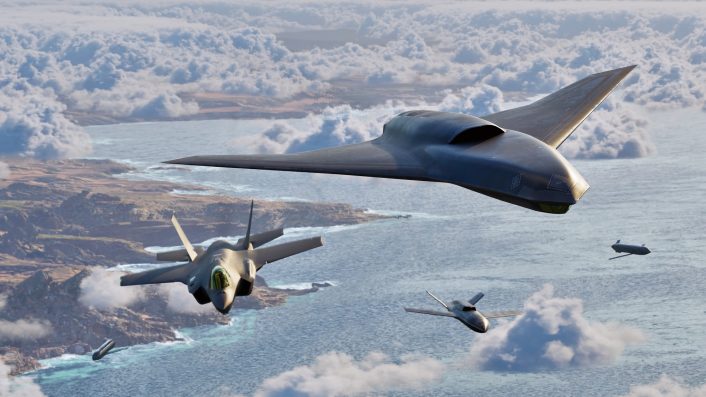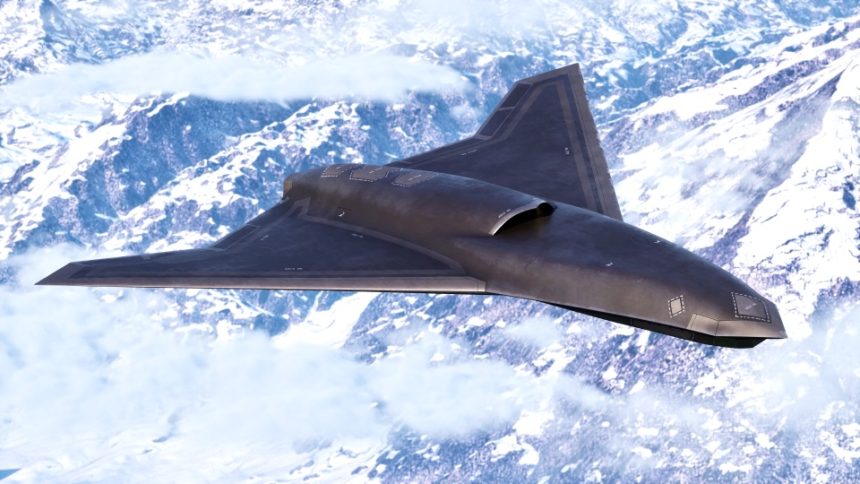Lockheed Martin says the new Group 5 survivable and lethal collaborative combat aircraft (CCA) will fly within two years.
Lockheed Martin’s Skunk Works has officially unveiled Vectis, a new self-funded Unmanned Combat Air Vehicle (UCAV) which the company describes as a Collaborative Combat Aircraft (CCA). Announced on Sept. 21, 2025, ahead of the Air, Space & Cyber Conference set to start the following day, the platform is presented as a survivable, lethal, and affordable Group 5 drone aimed at advancing U.S. and allied air dominance.
OJ Sanchez, vice president and general manager of Lockheed Martin Skunk Works, described Vectis as the convergence of decades of expertise in stealth technology, fighter integration, and autonomous systems. “We’re not simply building a new platform – we’re creating a new paradigm for air power based on a highly capable, customizable and affordable agile drone framework,” Sanchez said in the press release.
Designed for Next-Generation Air Dominance
According to Lockheed Martin, Vectis is intended to seamlessly integrate with fifth- and next-generation crewed aircraft, supporting the “Family of Systems” vision behind the Next Generation Air Dominance (NGAD) program. The unmanned aircraft is expected to team up with manned aircraft such as the F-35, says the press release – although the video also shows the F-22 controlling it, contributing to missions ranging from precision strike to Electronic Warfare (EW), Intelligence, Surveillance and Reconnaissance (ISR), and both offensive and defensive counter-air.
In fact, the video released by Lockheed Martin hints at Vectis being able to sense the battlespace, with multiple sensor apertures resembling the F-35’s EOTS and conformal antennas shown in the rendering. Following the detection of the threats, the F-22 – miles behind the drones – is shown acting as the “quarterback” of the formation and issuing the orders.
 A rendering of the Vectis Collaborative Combat Aircraft flying with the F-35 and other unmanned assets. (Image credit: Lockheed Martin)
A rendering of the Vectis Collaborative Combat Aircraft flying with the F-35 and other unmanned assets. (Image credit: Lockheed Martin)The company highlighted the platform’s “multi-domain connectivity,” stressing that Vectis can operate either as a standalone system or as part of a larger integrated network. The UCAV’s endurance is described as suitable for missions across Indo-Pacific, European, and Middle Eastern theaters – regions where extended range is considered a key requirement.
Stealth, Affordable and Open
Lockheed Martin says Vectis leverages decades of stealth expertise to deliver “best in CCA class survivability.” At the same time, the company emphasizes affordability, claiming that advanced manufacturing and digital engineering methods used in next-generation fighter development will allow the system to be offered “at a CCA price point.”
Moreover, the video by the company notably mentions Darkstar, the X-44, Polecat and the RQ-170 while explaining it leveraged six decades of experience in the unmanned aircraft sector.
Another design driver is the use of Open Systems. By aligning Vectis with U.S. Government Reference Architectures, Lockheed Martin says it aims to avoid vendor lock-in and ensure compatibility across a wide spectrum of command and control systems, including its existing Mission Domain Control eXperience (MDCX).
Development is already underway, with components ordered and teams executing initial builds. Skunk Works plans to move quickly, stating that the company is investing its own funds to “design, build and fly within two years.”
A Competitive Field
The introduction of Vectis underscores the highly competitive environment of the U.S. Air Force’s CCA program. The service envisions a fleet of affordable, attritable, and survivable uncrewed platforms to augment and extend the reach of its manned fighter force.
Other industry teams – including Boeing, Northrop Grumman, General Atomics, and Anduril – are already positioning their own designs for the program. As we reported here at The Aviationist, Boeing has showcased its MQ-28 Ghost Bat in U.S. demonstrations, while General Atomics flew for the first time its YFQ-42 and Anduril is set to follow soon with its YFQ-44.
The addition of Vectis signals Lockheed Martin’s intent to remain at the center of U.S. combat aviation development, leveraging its role as prime contractor for the F-35 and the experience from the NGAD competition. While there is no mention of it in the press release, the work on Vectis might also be in preparation for the CCA Increment 2 selection.
Looking Ahead
While Lockheed Martin has not yet released detailed specifications such as payload capacity, range, or stealth characteristics, the video hints at the tailless lambda wing drone being single-engined, with an internal weapon bay large enough for an AGM-88 HARM. Obviously, it should be noted that the renderings might not be fully accurate.
The emphasis on rapid development and affordability indicates a shift from traditional, decades-long acquisition timelines. This is an aspect which has recently been criticized, and the different Increments of the CCA program aim to avoid long timelines and quickly field affordable combat mass.
The unveiling of Vectis also reflects the broader shift toward human-machine teaming as the cornerstone of future air power, as more and more companies are working on similar technologies following the interest of the military. As Skunk Works frames it, Vectis is designed to “deliver class-leading survivability in an agile, multi-role package” at a price point that enables deployment at scale.









